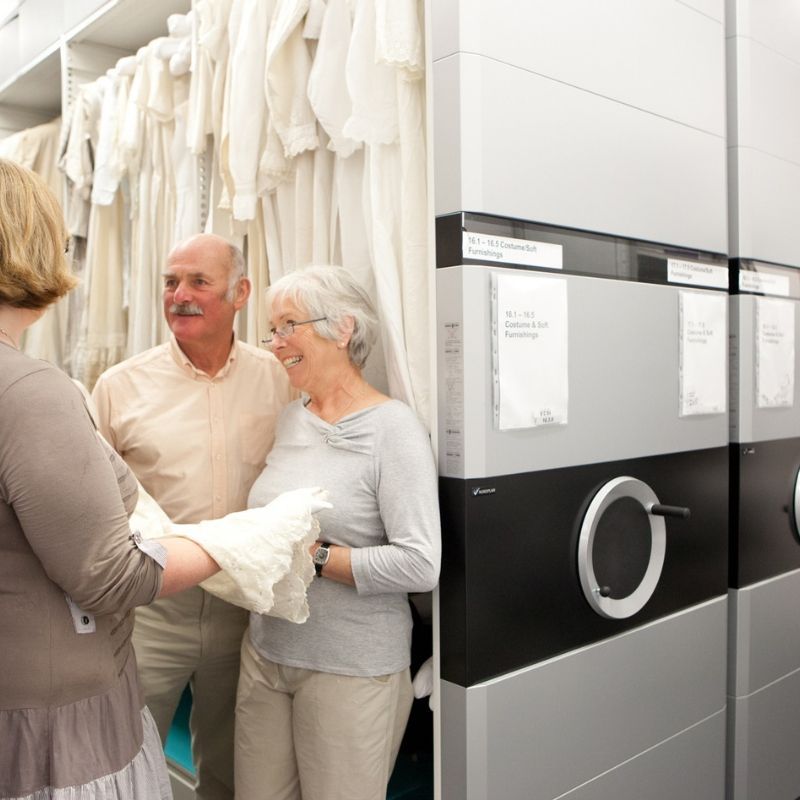At Preston Park Museum, our Dynamic Collections project is in full swing, with over 3,000 objects carefully inventoried and packed by our dedicated staff and volunteers. They will go on display in a new interactive and visible collection store, which is being built as part of a bold transformation of Preston Park Museum & Grounds, set to open to the public in summer 2025.
As we work to preserve these items and prepare them for future display, there’s an important aspect we always keep in mind – safety!
Handling and storing museum collections isn’t just about preserving history; it’s also about making sure everyone involved stays safe. While most objects in our care are harmless, some can pose risks, and we need to take extra precautions to protect both the collections and the people working with them.
What are hazards in museum collections?
In a museum setting, hazards can fall into two main categories: hazardous substances and physical hazards.
- Hazardous substances could be chemicals or materials that part of an object, or that were used in the creation of the object. These substances can be dangerous if not handled properly.
- Physical hazards refer to risks that don’t involve harmful chemicals but could cause injury- like broken glass or sharp edges
While the majority of objects we handle are safe, we always stay alert and follow best practices to ensure both staff and volunteers are protected.
Hazards found in in our collections
Lead
Lead is a heavy, dull-coloured metal that was used in various historical objects, such as weights, stained glass window frames, and even early medicines. Lead can become hazardous if it corrodes, turning into a fine white powder called lead carbonate. While handling objects made from lead, we wear nitrile gloves to avoid direct contact, ensuring the metal stays safe to handle as long as it’s in good condition.
Asbestos
Asbestos is a mineral that was once widely used for its fire-resistant and insulating properties. Although its use has decreased due to health risks, some older objects may still contain asbestos, we follow a careful process of assessment and label it with an Asbestos Hazard sticker. The item is then set aside for further review by specialists to ensure it’s handled safely.
Broken glass
Occasionally, we encounter objects with broken glass. Broken glass is a physical hazard that requires special care. When we find damaged glass, we carefully wrap the object in protective foam add a ‘Broken Glass’ glass label, and make sure it’s stored securely to prevent any injury. This helps keep both the object and our team safe while the object is awaiting repair or further inspection.
These are just a few examples of the types of hazards we may encounter. Whenever a potential hazard is identified, we use a red hazard label to mark the object and ensure that it’s recorded in our Collection Database. If further action is needed, we use a yellow ‘Hold’ label to indicate that the item requires additional attention from staff or external experts.
Keeping our Collections safe
Handling museum collections requires careful attention to safety, and our team of staff and volunteers are trained to recognise and manage potential risks. By following strict safety procedures, we can ensure that objects are preserved for future generations, while also keeping everyone involved in the project safe.
We hope this gives you an insight into the important safety work that goes on behind the scenes at Preston Park Museum. As we continue with our Dynamic Collections project, we’ll keep you updated on the exciting progress and challenges we face along the way.

